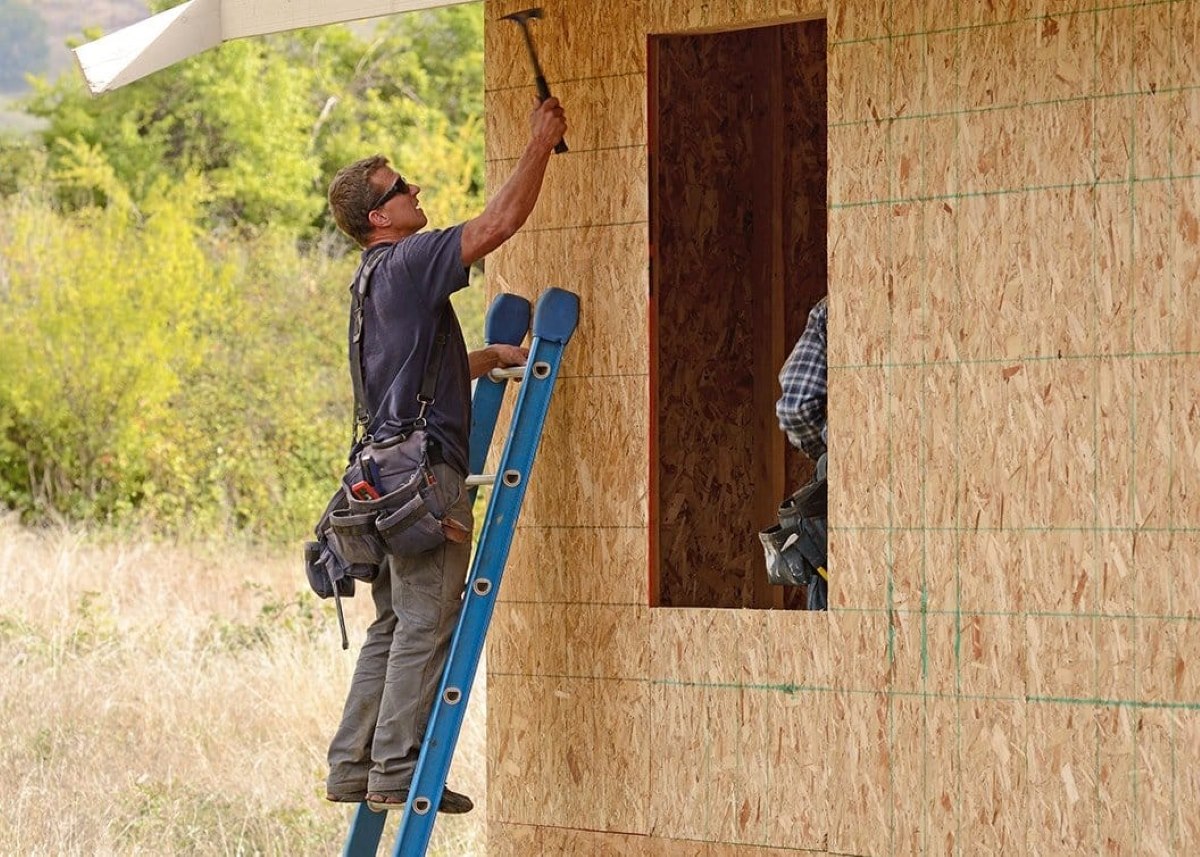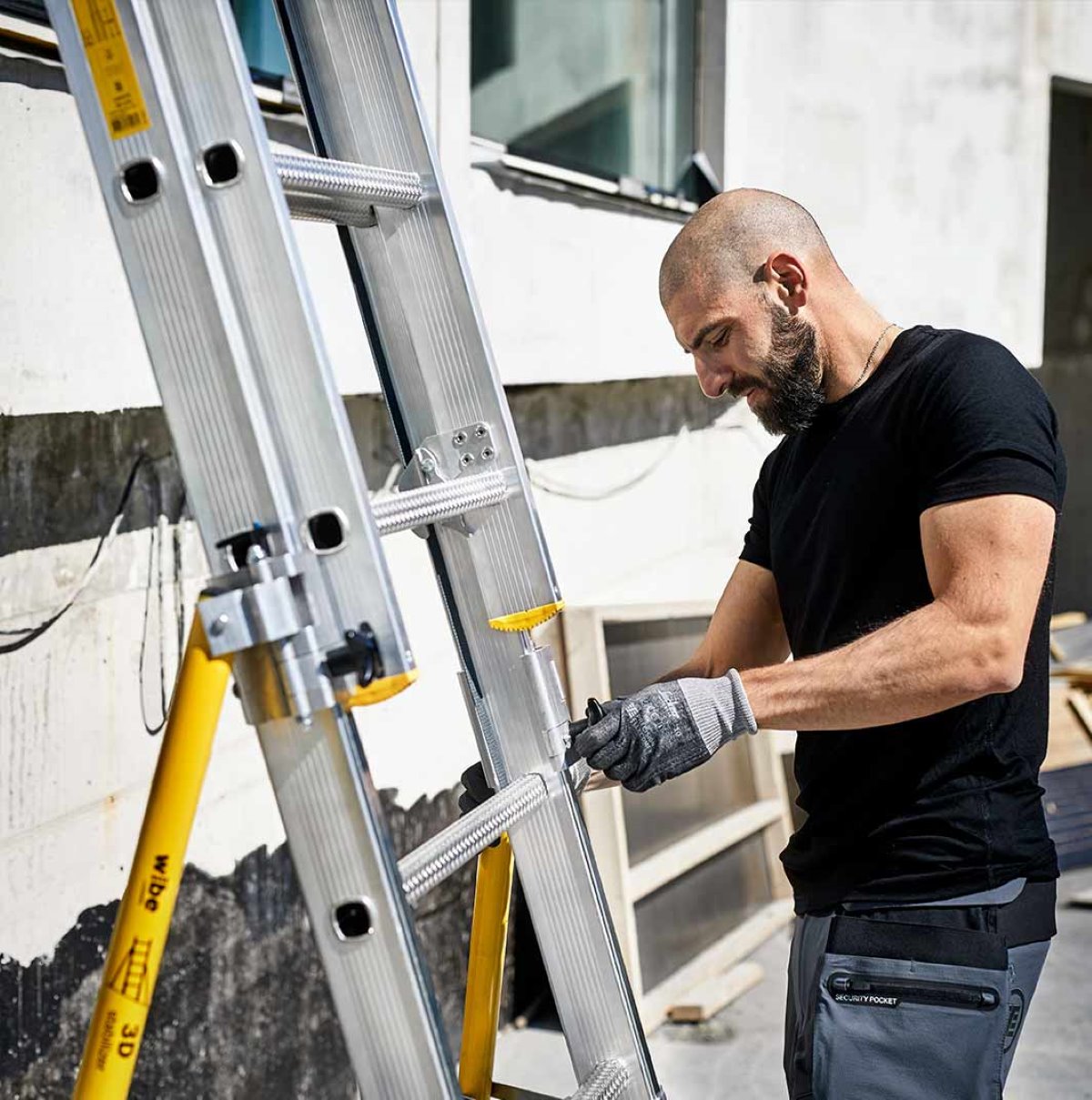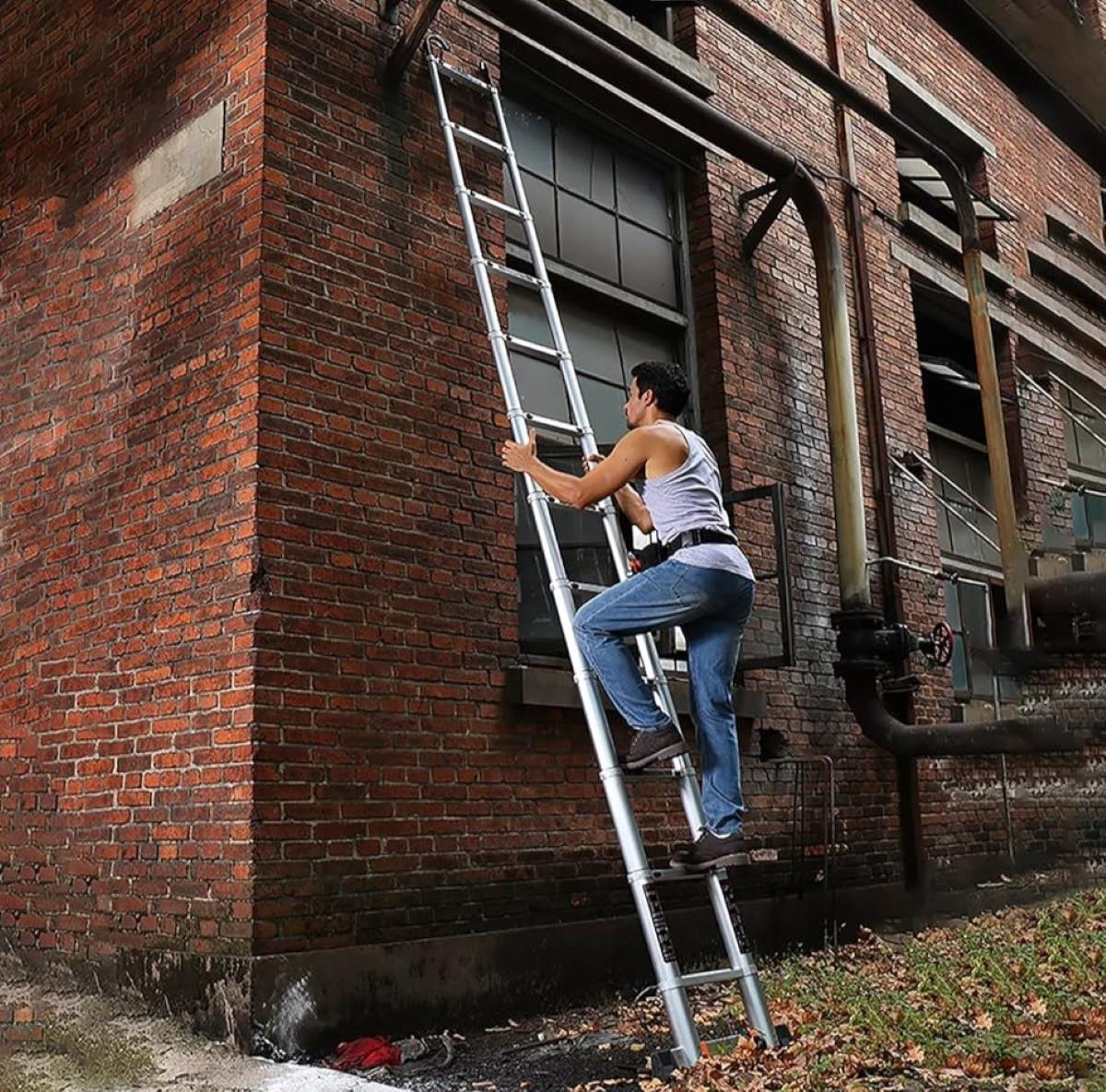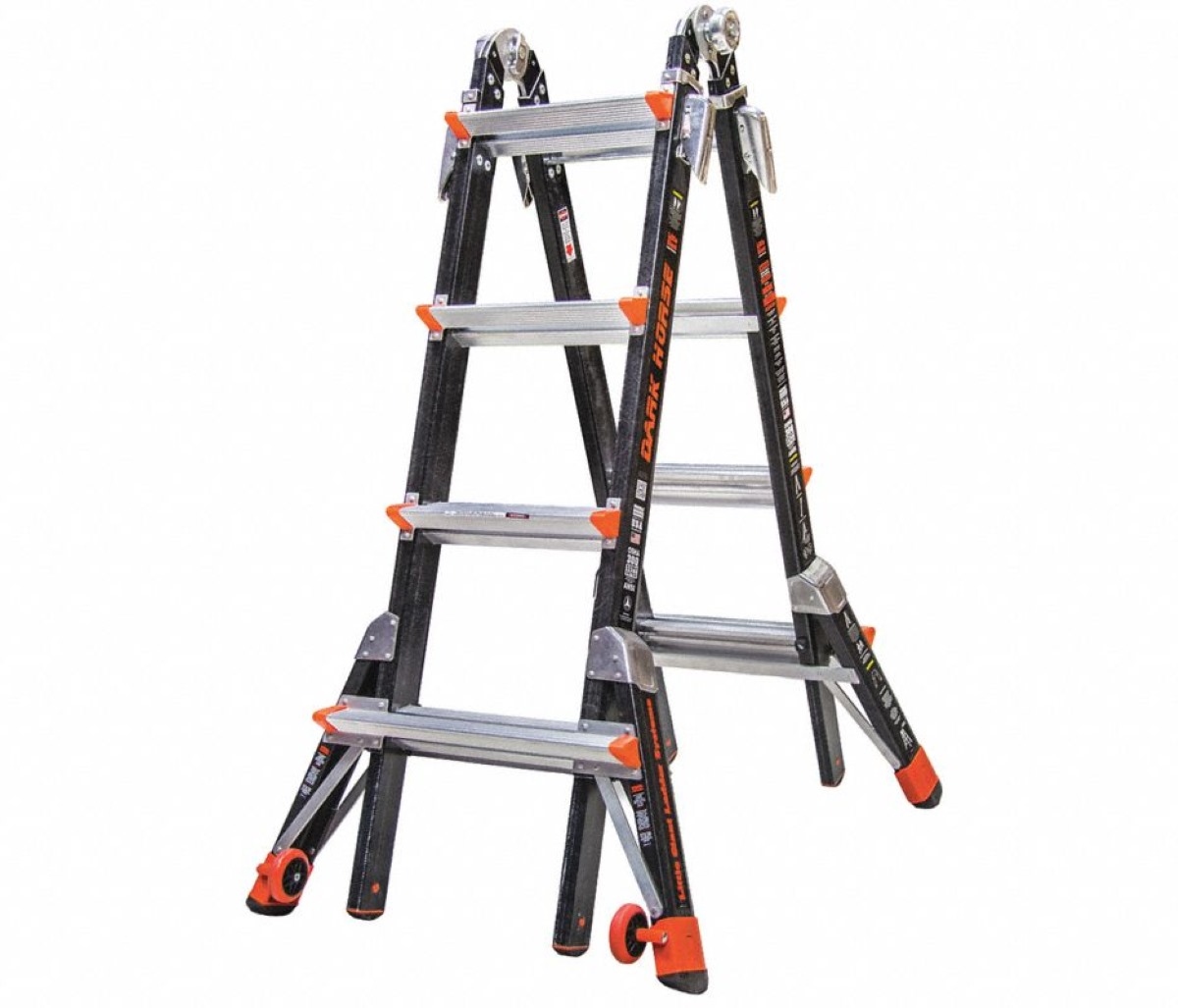Home>Articles>Where Should You Never Stand On A Straight Ladder


Articles
Where Should You Never Stand On A Straight Ladder
Modified: October 31, 2024
Discover essential safety tips for using a ladder. Learn where you should never stand on a straight ladder. Read our informative articles now!
(Many of the links in this article redirect to a specific reviewed product. Your purchase of these products through affiliate links helps to generate commission for Storables.com, at no extra cost. Learn more)
Introduction
When it comes to working at heights, ladder safety should always be a top priority. Accidents involving ladders can result in serious injuries or even fatalities. It is important to understand the proper methods of ladder usage to ensure your safety and the safety of those around you.
One common mistake that people make when using straight ladders is standing in the wrong place. This can greatly increase the risk of falling and can lead to disastrous consequences. In this article, we will explore the areas where you should never stand on a straight ladder, highlighting the potential dangers associated with each spot.
By understanding the importance of proper ladder positioning and following the safety guidelines, you can greatly reduce the risk of accidents and create a safer working environment.
Key Takeaways:
- Proper ladder positioning is crucial for safety. Never stand near the top rung, in the center, or on the bottom rung of a straight ladder to avoid instability and overreaching.
- Following ladder safety guidelines and tips for safe ladder usage can greatly reduce the risk of accidents and create a safer working environment. Always prioritize safety when working at heights.
Read more: 35 Daybeds You Should Never Miss
Understanding ladder safety
Before diving into the specifics of where you should never stand on a straight ladder, let’s take a moment to understand some basic ladder safety principles. Ladder accidents often occur due to improper usage or negligence, so it is crucial to be aware of the potential risks and precautions.
First and foremost, always inspect the ladder before use. Check for any damages such as cracks, loose rungs, or faulty hinges. Ensure that the ladder is in good condition and capable of supporting your weight. If you notice any issues, do not use the ladder and report it to the appropriate authority for repair or replacement.
Next, choose the right ladder for the job. Different jobs require different types of ladders, and using the wrong ladder can increase the risk of accidents. Consider the height, weight capacity, and the specific requirements of the task at hand before selecting a ladder.
When setting up the ladder, make sure it is placed on a firm and level surface. Avoid soft or uneven ground, as it can cause the ladder to wobble or tip over. If necessary, use ladder levelers or stabilizers to ensure stability.
Always maintain three points of contact while climbing the ladder – two hands and one foot, or two feet and one hand. This will provide you with a stable base and prevent falls. Never overreach or lean too far to one side while on the ladder. Instead, reposition the ladder if you cannot reach your desired area comfortably.
Lastly, be wary of your surroundings. Keep an eye out for overhead obstructions such as power lines or low-hanging branches that may interfere with your work. Eliminate any potential hazards before climbing the ladder.
By adhering to these ladder safety guidelines, you can minimize the risk of accidents and ensure a safe work environment.
The dangers of standing in the wrong place
Standing in the wrong place on a straight ladder can significantly increase the risk of falls and injuries. It is important to understand the potential dangers associated with improper ladder positioning to avoid accidents and maintain a safe work environment.
One of the main dangers is the instability of the ladder. When you stand in an incorrect position, you may unintentionally shift the ladder’s center of gravity, making it more prone to tipping over. This can happen if you place your weight too far to one side of the ladder, causing an imbalance that can lead to a fall.
In addition to instability, standing in the wrong place can also lead to overreaching. Overreaching on a ladder is extremely dangerous as it can cause you to lose balance and fall. Stretching too far to reach an object or work area can cause the ladder to shift or slip, resulting in a potentially serious accident.
Another danger is the improper distribution of your weight. Ladders are designed to support your weight when you stand on specific rungs. Standing on the wrong rung, especially near the top or bottom, can exceed the ladder’s weight capacity and lead to structural failure. This can result in the ladder collapsing, causing severe injuries.
Lastly, standing in the wrong place can limit your ability to maintain three points of contact. As mentioned earlier, it is crucial to have both hands and one foot, or both feet and one hand, in contact with the ladder at all times. Standing in an incorrect position may force you to lean too far or lose your balance, increasing the risk of falling.
To avoid these dangers, it is vital to know where you should never stand on a straight ladder.
Where you should never stand on a straight ladder
When using a straight ladder, there are specific areas where you should never stand to ensure your safety. It is important to be aware of these locations and avoid them to minimize the risk of accidents and falls. Here are the areas where you should never stand on a straight ladder:
1. Area near the top rung: Standing on or near the top rung of a straight ladder is extremely dangerous. The top rung is not intended for weight-bearing and can lead to ladder instability or collapse. Always maintain a distance of at least three rungs below the top when standing on a straight ladder.
2. The center of the ladder: Standing directly in the middle of the ladder can cause it to become unbalanced. This puts you at a higher risk of falling and tipping the ladder over. Instead, position yourself slightly to one side, keeping your weight evenly distributed and maintaining stability.
3. The bottom rung or last two rungs: The bottom rung of a straight ladder is not designed to support your weight. It is used for stabilizing and positioning the ladder securely on the ground. Standing on the bottom rung can result in the ladder slipping or toppling over. Similarly, the last two rungs should be avoided to prevent ladder instability.
By avoiding these areas on a straight ladder, you can ensure proper weight distribution, stability, and minimize the risk of accidents. Take the time to position yourself correctly and always follow ladder safety guidelines.
Area near the top rung
One of the areas where you should never stand on a straight ladder is near the top rung. The top rung of a ladder is not meant for weight-bearing and can lead to dangerous consequences if used incorrectly.
When you stand on or near the top rung, you risk compromising the ladder’s stability. The top rung is not as sturdy as the lower rungs, and putting your weight on it can cause the ladder to become unbalanced. This imbalance increases the chances of the ladder tipping over, leading to a potentially severe fall.
In addition to instability, standing near the top rung can lead to overreaching. Since the top rung is higher, it may tempt you to reach beyond your safe reach limits. Overreaching can cause you to lose your balance or shift the ladder’s position, putting you in a precarious situation.
Furthermore, the top rung may not provide adequate support for your feet. It is typically narrower and less secure compared to the lower rungs, making it easier for your feet to slip or lose grip while standing on it. This lack of stability greatly increases the risk of falls and injuries.
To ensure your safety, always maintain a safe distance from the top rung of a straight ladder. It is recommended to position yourself at least three rungs below the top. This allows for better stability, weight distribution, and reduces the risk of ladder failure.
Remember, the top rung of a straight ladder is not designed to bear weight, and standing in this area can lead to accidents. Always prioritize ladder safety by avoiding standing near the top rung and following proper ladder usage guidelines.
Never stand on the top two rungs of a straight ladder, as it can lead to loss of balance and serious injury. Always maintain three points of contact and follow the ladder’s safety guidelines.
The center of the ladder
Another area where you should never stand on a straight ladder is in the center. While it may seem like a natural position to stand, it can actually compromise the stability and balance of the ladder.
Standing in the center of the ladder can cause it to become unbalanced. When you place your weight directly in the middle, it shifts the ladder’s center of gravity, making it more susceptible to tipping over. This can lead to a dangerous fall and potential injuries.
By standing slightly to one side of the ladder, you distribute your weight more evenly, ensuring better stability and reducing the risk of accidents. Keep your feet planted firmly on the rungs and maintain a centered position relative to the ladder’s width.
Standing off-center also provides you with better control and maneuverability. It allows for improved posture, with your body facing the work area directly. This reduces the strain on your arms, back, and legs while performing tasks on the ladder.
Additionally, being positioned slightly to one side helps in maintaining three points of contact with the ladder. Remember, it is crucial to always have both hands and one foot, or both feet and one hand, in contact with the ladder for stability and balance. Standing in the center may hinder your ability to maintain this three-point contact, increasing the risk of falls.
When using a straight ladder, avoid standing in the center. Instead, position yourself slightly off-center to maintain stability, distribute weight evenly, and facilitate better control and balance. Following these guidelines will help ensure a safer ladder experience and reduce the chances of accidents.
The bottom rung or last 2 rungs
The bottom rung and the last two rungs of a straight ladder are areas where you should never stand. These sections of the ladder are not intended to support your weight and can compromise ladder stability and your safety.
Standing on the bottom rung of a straight ladder is hazardous because it is designed to provide stability, not weight-bearing. Placing your weight on the bottom rung can cause the ladder to slip or topple over, resulting in a fall. It is crucial to use the bottom rung only for stabilizing and positioning the ladder securely on the ground.
Similarly, the last two rungs, which are located near the top of the ladder, should be avoided as well. These uppermost rungs have a narrower spacing compared to the rest of the ladder, providing less stability and a smaller surface area for your feet. By standing on the last two rungs, you risk losing your balance and slipping off the ladder.
In addition to compromising stability, standing on the bottom rung or the last two rungs can exceed the ladder’s weight limit. Straight ladders have a maximum load capacity, and standing on these areas can put undue stress on the ladder structure, potentially leading to its failure.
To ensure your safety, always avoid standing on the bottom rung or the last two rungs of a straight ladder. Instead, position yourself on a sturdy rung in the middle of the ladder, maintaining at least three rungs below the top rung for proper weight distribution and stability.
By following these guidelines, you can minimize the risk of accidents, prevent ladder failure, and create a safe working environment.
Tips for safe ladder usage
To ensure safe ladder usage, it’s important to follow certain guidelines and take necessary precautions. By implementing these tips, you can reduce the risk of accidents and create a safer working environment. Here are some key tips for safe ladder usage:
- Choose the right ladder: Select a ladder that is suitable for the task at hand. Consider factors such as height, weight capacity, and the type of work you will be performing. Choosing the correct ladder will ensure stability and prevent accidents.
- Inspect the ladder: Before using a ladder, conduct a thorough inspection. Look for any damages or defects such as cracks, loose steps, or bent rails. Ensure that all hinges, locks, and braces are in proper working condition. Do not use a ladder that is damaged or faulty.
- Position the ladder correctly: Place the ladder on a firm, level surface. Avoid soft ground or uneven surfaces that can cause the ladder to wobble or tip over. Use ladder levelers or stabilizers if necessary to enhance stability.
- Maintain three points of contact: When climbing the ladder, always maintain three points of contact. This means having both hands and one foot, or both feet and one hand, in contact with the ladder at all times. This ensures stability and reduces the risk of falls.
- Avoid overreaching: Do not overreach while on a ladder. Instead, reposition the ladder as needed to reach your desired work area comfortably. Overreaching can cause the ladder to shift or slip, leading to accidents.
- Use proper climbing techniques: Ascend and descend the ladder facing it directly. Do not lean to one side or twist your body while on the ladder. Use the handrails for support and take one step at a time. Maintain a steady and controlled movement to prevent falls.
- Keep the area clear: Ensure that the area around the ladder is clear of obstructions. Remove any objects, debris, or tools that may pose a tripping hazard. This will minimize the risk of accidents while climbing or descending the ladder.
- Avoid excessive weight and movement: Do not exceed the ladder’s weight capacity. It is designed to support a specific amount of weight, including your body weight and any equipment or materials you need to carry. Also, avoid sudden or jerky movements that can destabilize the ladder.
- Communicate and work with a buddy: When using a ladder, it’s always a good idea to have someone nearby to assist or monitor the ladder. If possible, work with a buddy who can provide support and ensure your safety.
- Proper storage and maintenance: After use, store the ladder in a designated area where it is protected from damage or deterioration. Regularly clean and maintain the ladder to ensure its longevity and functionality.
Adhering to these tips will significantly reduce the risk of ladder-related accidents and help create a safer working environment. Make ladder safety a priority and always follow these guidelines to ensure your well-being.
Conclusion
Ladder safety is of utmost importance to prevent accidents and ensure a safe working environment. When using a straight ladder, it is crucial to understand where you should never stand to minimize the risk of falls and injuries.
Avoid standing near the top rung, as it can compromise ladder stability and lead to overreaching. Standing in the center of the ladder can also cause imbalance and instability. Additionally, the bottom rung and last two rungs should be avoided, as they are not designed for weight-bearing and can compromise ladder integrity.
By following ladder safety guidelines and practicing proper ladder usage, you can enhance your safety and the safety of those around you. Inspect the ladder, choose the right ladder for the task, position it correctly on a stable surface, and always maintain three points of contact while climbing. Avoid overreaching, keep the work area clear, and communicate with a buddy for additional support.
Remember, using a ladder improperly or standing in the wrong place can have severe consequences. Falls from ladders can result in serious injuries or even fatalities. By being aware of the potential dangers and following the tips for safe ladder usage, you can mitigate the risks and create a safe working environment.
Always prioritize your safety and that of others when using a ladder. Proper ladder usage, along with awareness and vigilance, will minimize accidents, promote workplace safety, and ensure a successful outcome for every task at hand.
Frequently Asked Questions about Where Should You Never Stand On A Straight Ladder
Was this page helpful?
At Storables.com, we guarantee accurate and reliable information. Our content, validated by Expert Board Contributors, is crafted following stringent Editorial Policies. We're committed to providing you with well-researched, expert-backed insights for all your informational needs.















0 thoughts on “Where Should You Never Stand On A Straight Ladder”